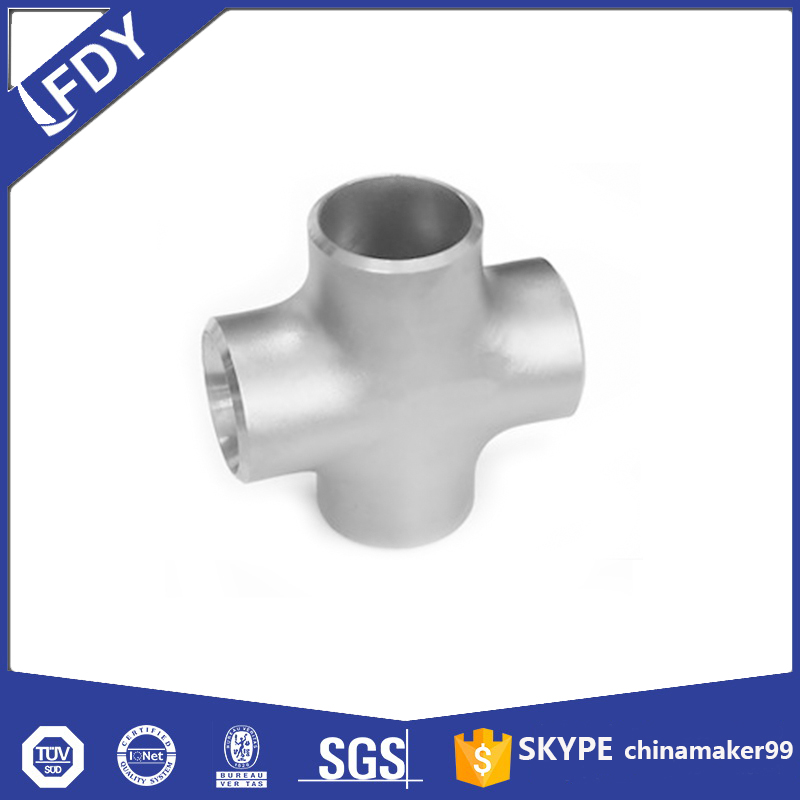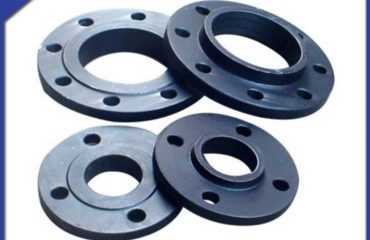
Abstract
Butt welded fittings are indispensable components in modern pipeline systems, celebrated for their exceptional structural integrity, corrosion resistance, and adaptability to extreme environments. This paper systematically examines their mechanical advantages, hygienic benefits, and installation efficiencies through material science and engineering perspectives. By analyzing real-world applications in high-stakes industries and discussing emerging technologies, the research highlights their irreplaceable role in ensuring operational safety and efficiency while outlining future development trends.
1. Introduction
In industrial pipeline infrastructure, the reliability of pipe connections is paramount for safety, efficiency, and longevity. Butt welded fittings, created by joining pipe ends of identical diameter through full-penetration welding, offer a seamless and robust alternative to traditional connection methods like socket welding or threading. Unlike their counterparts, which often suffer from stress concentrations, crevices, or limited pressure ratings, butt welded fittings provide a homogenous structural continuum. This paper explores their technical advantages, practical applications, and contributions to modern engineering across diverse sectors.
2. Mechanical Strength and Structural Integrity
2.1 Homogeneous Joint Performance
Butt welding achieves a fusion bond that mimics the mechanical properties of the base material. Through techniques like tungsten inert gas (TIG) or submerged arc welding (SAW), these fittings attain full penetration, ensuring tensile strength that typically exceeds 95% of the parent metal. For example, in ultra-supercritical power plants, butt welded elbows made from ASTM A335 P91 steel (a 9Cr-1Mo-V alloy) maintain structural stability at 620°C and 30 MPa, conditions where weaker connections would fail due to creep or fatigue. The seamless design eliminates abrupt diameter changes, reducing turbulent flow and stress concentrations by up to 30% compared to socket weld fittings, as confirmed by finite element analysis (FEA) in pipeline systems carrying high-velocity fluids.
2.2 Resistance to Extreme Conditions
In petrochemical hydrogenation units, butt welded reducers constructed from ASTM A182 F22 steel (2.25Cr-1Mo) withstand hydrogen pressures of 18 MPa and temperatures exceeding 500°C for over a decade. This durability contrasts sharply with threaded fittings, which often require annual replacement due to stress fatigue in similar environments. The ability to endure such harsh conditions stems from post-weld heat treatment (PWHT), which optimizes the microstructure of alloy steels to resist creep, hydrogen embrittlement, and sulfidation.
3. Corrosion Resistance and Hygienic Design
3.1 Mitigating Corrosive Environments
Butt welded fittings excel in corrosive settings due to their smooth internal surfaces and crevice-free design. For instance, in offshore oil pipelines exposed to seawater with 20,000 ppm chloride ions, super duplex stainless steel (UNS S32750) butt welded tees exhibit pitting resistance far superior to socket weld alternatives. The absence of stagnant gaps in butt welds prevents the accumulation of corrosive media, a critical advantage in systems transporting sulfuric acid or saltwater. In a pharmaceutical plant’s acidic pipeline, electropolished 316L stainless steel butt welds reduced corrosion rates to 0.02 mm/year in 10% HCl, an 80% improvement over socket weld fittings.
3.2 Hygienic Excellence in Sensitive Industries
In food and pharmaceutical manufacturing, butt welded fittings meet stringent hygiene standards. Their seamless interiors, achieved through orbital welding with bead heights under 0.5 mm, minimize microbial adhesion and facilitate effective clean-in-place (CIP) procedures. A dairy plant implementing butt welded 316L stainless steel fittings in pasteurization lines reduced microbial contamination by 92% compared to threaded systems, ensuring compliance with FDA and ASME BPE regulations. This hygienic design is indispensable in biopharmaceutical applications, where sterile conditions are non-negotiable.
4. Manufacturing Precision and Installation Efficiency
4.1 Advanced Fabrication Techniques
Modern manufacturing relies on computerized precision to ensure consistency. CNC pipe beveling machines create angles within ±1° tolerance, optimizing weld penetration for fittings like 12-inch ASTM A694 F65 flanges, which require wall thickness tolerances of ±1%. Nondestructive testing (NDT), such as 100% radiographic or ultrasonic inspection, detects defects as small as 2% of wall thickness. In an LNG project, ultrasonic testing identified a 0.3 mm lack of fusion in a butt weld, preventing a catastrophic leak at -162°C.
4.2 Cost-Effective Installation
While initial costs for butt welded fittings are 15–20% higher than socket weld alternatives, their lifecycle costs are 30–50% lower due to reduced maintenance. For example, a chemical plant using butt welded systems saved $200,000 annually in leak repairs compared to threaded connections. The ability to create longer pipe runs with fewer joints—reducing joint counts by 30% in a 1,000-meter natural gas pipeline—also cuts installation time by up to 40%, making them preferable for large-scale projects.
5. Industrial Applications and Case Studies
5.1 Petrochemical and Refining
In a Gulf Coast refinery’s crude distillation unit, butt welded ASTM A182 F22 fittings operated reliably for 15 years in 500°C crude oil with high H₂S content. In contrast, socket weld carbon steel fittings in the same system failed within five years due to sulfidation corrosion, underscoring the longevity of butt welded solutions in aggressive environments.
5.2 Power Generation
A coal-fired power plant’s superheater system using butt welded P92 steel fittings withstood 620°C and 30 MPa for 80,000 hours without creep failure. This represents a fourfold improvement over earlier threaded carbon steel components, which required replacement every 20,000 hours, demonstrating significant operational cost savings.
5.3 Offshore and Subsea
In the North Sea, butt welded super duplex steel jumpers endured 100 MPa pressure and seawater corrosion for 25 years, double the service life of socket weld equivalents. Their ability to resist chloride-induced pitting and maintain structural integrity in subsea environments highlights their critical role in offshore infrastructure.
6. Challenges and Future Innovations
6.1 Current Hurdles
The reliance on skilled labor for orbital welding and proper post-weld heat treatment poses challenges in regions with workforce shortages. Improper PWHT can lead to residual stress and stress corrosion cracking (SCC), accounting for 12% of premature failures in butt welded fittings, according to recent studies.
6.2 Technological Frontiers
Automated welding robots with laser vision systems are revolutionizing precision, achieving bead uniformity within ±0.1 mm and boosting first-pass acceptance rates to 99.2%, as seen in a Saudi Arabian pipeline project. Additive manufacturing (e.g., electron beam melting of Inconel 718) enables complex geometries with 40% less material waste than traditional forging. Digital twin technology, embedding IoT sensors in fittings to monitor strain and corrosion in real time, has reduced unplanned downtime by 45% in pilot chemical plant applications.
7. Conclusion
Butt welded fittings are the cornerstone of reliable pipeline systems in high-stakes industries, offering unmatched strength, corrosion resistance, and operational efficiency. From the ultra-hot environments of power plants to the deep-sea pressures of offshore platforms, their ability to perform in extreme conditions ensures safety and sustainability. While challenges like labor expertise and residual stress persist, advancements in automation, materials science, and digital monitoring are poised to elevate their performance further. As industries demand ever-higher standards for durability and sustainability, butt welded fittings will remain the definitive choice for critical infrastructure, driving progress in energy, manufacturing, and beyond.
 Language
Language Espanol
Espanol English
English Italian
Italian عربى
عربى
 Skype: chinamaker99
Skype: chinamaker99  Tel: 86-316-5120812
Tel: 86-316-5120812 Email:
Email:  Whatsapp:
Whatsapp: 
